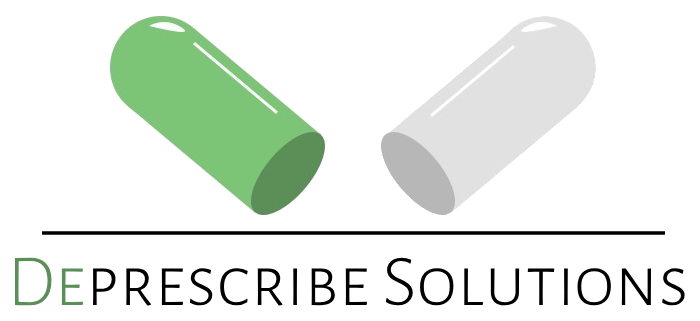Lemons, community pharmacy and a race to the bottom.
A colleague of mine (s/o WS) recently introduced me to an economic concept called the “Market for Lemons” put forward by the economist, George A. Akerlof. Since learning about the term, I can’t help but see the analogy of the Market for Lemons to the Market for Pharmacy and health-related services. In this post, I want to share my thoughts on how this economic concept can explain the decline of community pharmacy and our general healthcare infrastructure. Here we go.

The Lemon Problem
Since I’m not an economist, I’d like to borrow from Investopedia to briefly explain and provide an overview of the Market for Lemons.
The lemons problem refers to issues that arise regarding the value of an investment or product due to asymmetric information possessed by the buyer and the seller.
In his paper, Akerlof examined the used car market and illustrated how the asymmetry of information between the seller and buyer could cause the market to collapse, getting rid of any opportunity for profitable exchange and leaving behind only “lemons,” or poor products with low durability that the buyer purchased without sufficient information.
Akerlof’s original example of the purchase of a used car noted that the potential buyer of a used car cannot easily ascertain the true value of the vehicle. Therefore, they may be willing to pay no more than an average price, which they perceive as somewhere between a bargain price and a premium price.
Adopting such a stance may at first appear to offer the buyer some degree of financial protection from the risk of buying a lemon. Akerlof pointed out, however, that this stance actually favors the seller, since receiving an average price for a lemon would still be more than the seller could get if the buyer had the knowledge that the car was a lemon.
Ironically, the lemons problem creates a disadvantage for the seller of a premium vehicle, since the potential buyer’s asymmetric information—and the resulting fear of getting stuck with a lemon—means that they are not willing to offer a premium price for a vehicle of superior value.
TLDR
In a lemon market, the buyer (patient) has little to no information about the quality of the service they are receiving from the seller (pharmacy).
High-quality sellers (pharmacies that focus solely on clinical outcomes, high-quality patient care and providing value) can’t compete in the market against low-quality sellers (pill mill pharmacies that focus solely on prescription volume and low-quality patient services that have little impact on clinical outcomes [i.e. medchecks]).
Meanwhile, the buyers of these services have no idea that they’re receiving suboptimal care for low prices.
Thus, the market automatically deteriorates to offer the cheapest and lowest quality service.
A Typical Visit To The Pharmacy
- You go to the pharmacy to get medicine (obviously).
- When you fill a prescription, you must pay a dispensing fee. Nobody likes to pay “high” dispensing fees. The average dispensing fee ranges from $8-$13. Some big box pharmacies and chains may offer a premium dispensing fee of $3-$4, an “advantage” for the big players in the game.
- The dispensing fee encompasses all the work it takes to dispense the medication. To dispense a medicine, most people think the pharmacy team just slaps a label on a bottle and the pharmacist will tell you to take your medicine with or without food. That should take about 2-5 minutes of work. I think we can agree that 3-13 bucks is a good deal for that level of service.
In reality, many more things must be done behind the scenes. The pharmacist has to check and verify the prescription and ensure there are no drug interactions or other potential drug therapy problems that may arise. What price would you be willing to pay to prevent a potentially serious drug-related problem? For example, a life-threatening drug interaction, or comprehensive education on severe side effects and when to report back to your MD to avoid complications.
A really good pharmacist will go the extra mile. They’ll sit down with the patient, review their medications, and provide outstanding education and additional resources. More importantly, they’ll give patients a very rare commodity in healthcare, direct access and time with a trusted healthcare provider.
The Problem with Pharmacy (and Healthcare)
Fast service, low out-of-pocket expenses and efficiency are the status quo in pharmacy. The asymmetric information between pharmacists and patients is that we the pharmacist, know we could be providing much more value, but we are handcuffed by the structure and shackles of our business models.
The problem is that the business model of pharmacy was designed to reflect the times of the industrial revolution. Pharmacies are built to function like an assembly line. This model emphasizes quantity over quality. The goal is to always drive more volume since there’s no effective reimbursement model that rewards services that focus on clinical outcomes.
Like pharmacists, medical doctors face similar issues. Although I’m not an MD, I have the privilege of working directly with MDs in a family walk-in clinic and pediatric urgent care clinic. Like pharmacies, these clinics are volume-based services and are reimbursed through a fee-for-service model. Patients fill up the queue and MDs can only spare a few minutes with each patient before going onto the next. It’s difficult to provide value-based clinical care when there is a bottomless pit of patients at your doorstep seeking urgent medical attention. When the system rewards quantity over quality, patient outcomes inevitably suffer.

The Solution
As technology continues its rapid evolution, I think it will present a unique opportunity to overcome the current lemon infestation in healthcare. There’s already an explosion of health-tech companies that are harvesting real-time data from patients, measuring everything from heart rate variability to tracking sleep quality.
With more data and information, patients may have a unique opportunity to tip the scales and balance some of the asymmetry of information that exists between them and healthcare providers.
For this to happen, health-tech companies need to digest and translate their data into actionable advice and education the patients can utilize to make informed decisions about their health.Lastly, pharmacists and other healthcare providers will need to evolve their practices. The technological revolution will undoubtedly disrupt our archaic business models and infrastructure. We need to focus more on providing direct patient care services, leveraging our expertise with technology to work with our patients. With the aid of technology, we can empower our patients and work directly with them in dynamic, proactive settings.
Thanks for reading. Much love.
P.S. If you or anyone you know is interested in coming off their meds or learning more about deprescribing, click on “Work with Shawn” at the top of the site, or you can fill out the form below to contact me directly.
May you be happy and healthy.
SG

